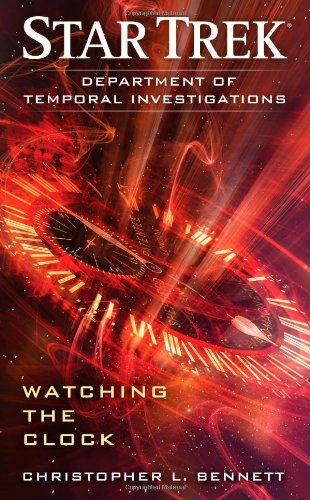 Watching the Clock (Star Trek: Department of Temporal Investigations #1) by Christopher L. Bennett
Watching the Clock (Star Trek: Department of Temporal Investigations #1) by Christopher L. Bennett Format: ebook
Source: purchased from Amazon
Formats available: paperback, ebook
Genres: science fiction, space opera, Star Trek, time travel
Series: Star Trek: Department of Temporal Investigations #1
Pages: 496
Published by Pocket Books on May 1, 2011
Purchasing Info: Author's Website, Publisher's Website, Amazon, Barnes & Noble, Kobo, Better World Books
Goodreads
There’s likely no more of a thankless job in the Federation than temporal investigation. While starship explorers get to live the human adventure of traveling to other times and realities, it’s up to the dedicated agents of the Federation Department of Temporal Investigations to deal with the consequences to the timestream that the rest of the Galaxy has to live with day by day. But when history as we know it could be wiped out at any moment by time warriors from the future, misused relics of ancient races, or accident-prone starships, only the most disciplined, obsessive, and unimaginative government employees have what it takes to face the existential uncertainty of it all on a daily basis . . . and still stay sane enough to complete their assignments.
That’s where Agents Lucsly and Dulmur come in—stalwart and unflappable, these men are the Federation’s unsung anchors in a chaotic universe. Together with their colleagues in the DTI—and with the help and sometimes hindrance of Starfleet’s finest—they do what they can to keep the timestream, or at least the paperwork, as neat and orderly as they are. But when a series of escalating temporal incursions threatens to open a new front of the history-spanning Temporal Cold War in the twenty-fourth century, Agents Lucsly and Dulmur will need all their investigative skill and unbending determination to stop those who wish to rewrite the past for their own advantage, and to keep the present and the future from devolving into the kind of chaos they really, really hate.
My Review:
“People assume that time is a strict progression of cause to effect but actually, from a non-linear, non-subjective point of view, it’s more like a big ball of wibbly wobbly timey wimey stuff.” At least according to Doctor Who.
Come to think of it, I’m pretty sure I spotted their TARDIS, or at least a TARDIS, somewhere (or somewhen) in the mass of confiscated time travel detritus stored in the Department of Temporal Investigations’ Vault on Eris. But I could be wrong. Or it might not be there now. Or then.
The thing about time travel, is that it messes up any sense of past, present and future, in the grammatical sense as well as every other way, more than enough to give anyone trying to talk about it – or write about it – a terrible and unending headache.
Just ask the folks at the Federation’s Department of Temporal Investigations, whose entire existence, across space and time, owes itself to Starfleet’s pressing need to clean up after Jim Kirk’s all too frequent messing about with time.
I really want to make a Law and Order reference to “these are their stories” because it does kind of work, even if DTI Agent Gariff Lucsly’s affect and mannerisms owe a lot more to Joe Friday in Dragnet.
The story in Watching the Clock combines two elements and both go back and forth in time more than a bit. Time which always seems to wibble just when it’s expected to wobble – and very much vice-versa. Seemingly ad infinitum and always ad nauseam.
The biggest variable often seems to wrap around who is getting the nauseam this time around.
As this is the first book in the Department of Temporal Investigations series, and that’s an agency that appears – often in rueful commentary – in several episodes across the Star Trek timeline without being the center of any incident – after all, DTI are more of a cleanup crew than an instigating force – a part of this book is to set up the agency, its primary officers, and its place within Starfleet.
Which results in more than a bit of that wibble and wobble, as the case that Agents Lucsly and Dulmur find themselves in the middle of is also in the middle of both the actual case (even if they’re not aware of it) and the Trek timeline, so the story needs to establish who they are, how they got to be where (and when) they are, and who they have to work with and against.
But the case they have before them – also behind them (time travel again) – is rooted in the Temporal Cold War, which seems to be heating up again. Assuming concepts like “again” have meaning in the context of time travel. Someone is operating from the shadows, manipulating the past in order to keep the Federation from defeating their aims in the future.
 Which sounds a lot like what the Borg were attempting in First Contact. As it should. When it comes to time travel, this has all happened before, and it will all, most certainly, happen again. And again. And AGAIN.
Which sounds a lot like what the Borg were attempting in First Contact. As it should. When it comes to time travel, this has all happened before, and it will all, most certainly, happen again. And again. And AGAIN.
Escape Rating A-: I picked this up because last week ended with some really frustrating reads. I was looking for something that I was guaranteed to be swept away by – no matter what. (I started the next St. Cyr book, What Darkness Brings, but it was too soon after the previous. I love the series, but like most series reads, I need a bit of space between each book so that the tropes don’t become over-familiar.)
It’s been a while since I read one of the Star Trek books, but I have a lot of them on my Kindle because they are one of the things Galen picks up when he’s looking for a comfort read. So there they were, and I hadn’t read this series. Although now I will when I’m looking for a reading pick-me-up.
There’s always plenty of Trek nostalgia to go around, and I’m certainly there for that, especially in the mood I was in. Howsomever, as a series set in the ‘verse but not part of one of the TV series, this one needed a bit more to carry this reader through all 500ish pages. Because that’s a lot, even for me. Especially when I’m flailing around for a read.
Watching the Clock combined the kind of buddy cop/partnership story that works so well in mystery – and this is a mystery – with that lovely bit of Trek nostalgia with a whole lot of thoughtful exploration of just what kind of a mess time travel would cause if it really worked.
Because the idea that going back in time would “fix” history, for certain definitions of both “fix” and history, sounds fine and dandy in fantasy but in SF just makes a complete mess out of causality and pretty much everything else.
(If you’re curious about other visions of just how badly it can go, take a look at One Day All This Will Be Yours by Adrian Tchaikovsky. The Tchaikovsky story, published a decade AFTER Watching the Clock, looks back on their version of a time war from the perspective of a battle-scarred, PTSD-ridden survivor and it’s not a pretty sight. But it is a fascinating story – also a lot shorter exploration of the same concepts as Watching the Clock.)
So, if you’re looking to get immersed in a familiar world while reading a completely original story set in that world, Watching the Clock is a fun read and Lucsly and Dulmur and all the members of the Department of Temporal Investigations are interesting people to explore it with. I had a ball, and if you’re a Trek fan you probably will tool.
If the concepts interest you but Trek isn’t your jam, check out One Day All This Will Be Yours.

 Big Trouble on Sullivan's Island (Carolina Tales Book 1) by
Big Trouble on Sullivan's Island (Carolina Tales Book 1) by 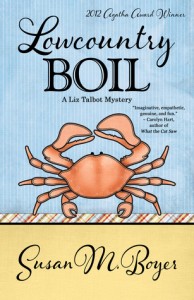 Escape Rating A-: I picked this up because I love the author’s
Escape Rating A-: I picked this up because I love the author’s 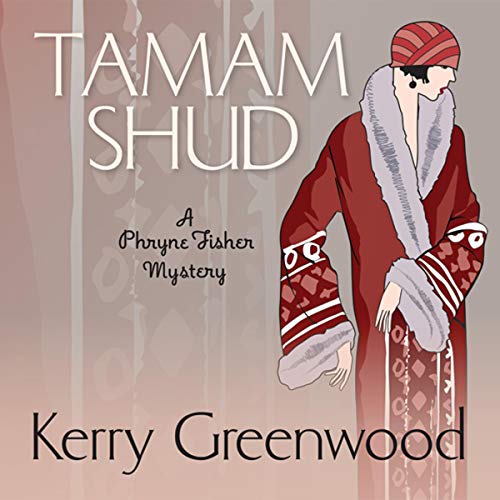 Tamam Shud: A Phryne Fisher Mystery by
Tamam Shud: A Phryne Fisher Mystery by 
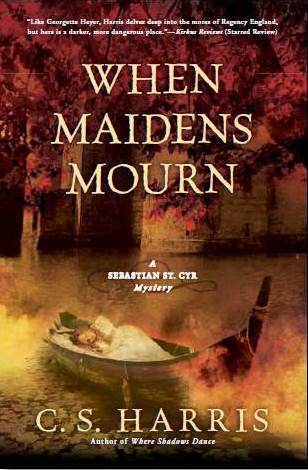 When Maidens Mourn (Sebastian St. Cyr, #7) by
When Maidens Mourn (Sebastian St. Cyr, #7) by  The legend of King Arthur has always loomed large over Britain, but even more so at times when the current monarch is less than popular. Or, as in the case of the corpulent, aging, spendthrift Prinny, Prince Regent for his mentally incapacitated father George III, not just unpopular but downright detested for his endless need for more money and therefore higher taxes to maintain his profligate lifestyle AND continue to prosecute Britain’s seemingly endless war with Napoleon and France.
The legend of King Arthur has always loomed large over Britain, but even more so at times when the current monarch is less than popular. Or, as in the case of the corpulent, aging, spendthrift Prinny, Prince Regent for his mentally incapacitated father George III, not just unpopular but downright detested for his endless need for more money and therefore higher taxes to maintain his profligate lifestyle AND continue to prosecute Britain’s seemingly endless war with Napoleon and France.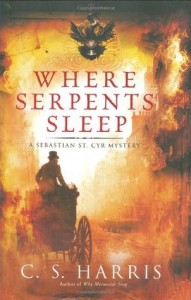 Escape Rating A+: The
Escape Rating A+: The 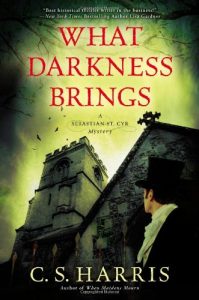 At least, it’s uncertain at this particular point in the series. I began reading St. Cyr almost 20 years ago, at the beginning with
At least, it’s uncertain at this particular point in the series. I began reading St. Cyr almost 20 years ago, at the beginning with 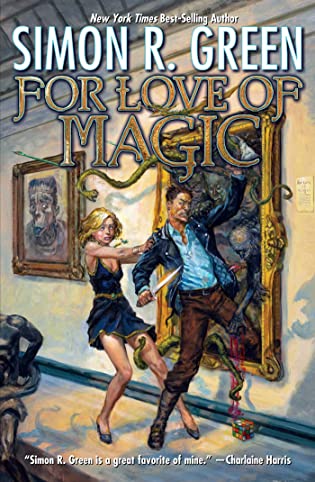 For Love of Magic by
For Love of Magic by 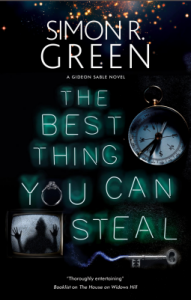 Escape Rating A-: I had a great time with For Love of Magic, but whether you will or not probably depends on how much you like snarky characters with even snarkier commentary – even though this Jack isn’t filled with nearly as much of the snark as some of the author’s previous protagonists.
Escape Rating A-: I had a great time with For Love of Magic, but whether you will or not probably depends on how much you like snarky characters with even snarkier commentary – even though this Jack isn’t filled with nearly as much of the snark as some of the author’s previous protagonists. Murder and Mendelssohn (Miss Fisher's Murder Mysteries, 20) by
Murder and Mendelssohn (Miss Fisher's Murder Mysteries, 20) by  For Detective Inspector Jack Robinson, who is most definitely NOT the Jack Robinson of the TV series, it’s a case that he fully admits is not in his area of expertise – so he solicits his friend Phryne Fisher’s help.
For Detective Inspector Jack Robinson, who is most definitely NOT the Jack Robinson of the TV series, it’s a case that he fully admits is not in his area of expertise – so he solicits his friend Phryne Fisher’s help. So a LOT happening, and a ton of fun in the resolution, with more than a bit of derring-do and just a soupçon of bittersweetness. A thoroughly delightful serving of Phryne Fisher’s fascinating brew. And I loved every minute of it!
So a LOT happening, and a ton of fun in the resolution, with more than a bit of derring-do and just a soupçon of bittersweetness. A thoroughly delightful serving of Phryne Fisher’s fascinating brew. And I loved every minute of it!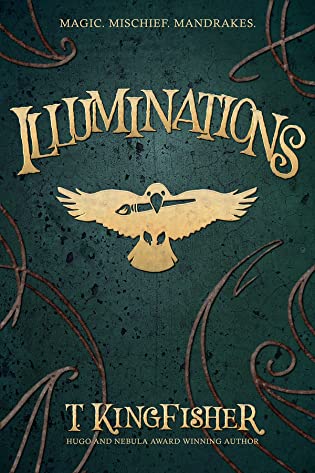 Illuminations by
Illuminations by 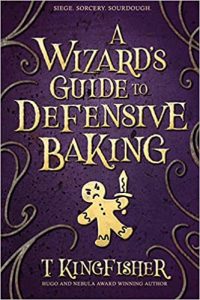 Escape Rating B: I picked up Illuminations because I was hoping for another incredibly awesome book like
Escape Rating B: I picked up Illuminations because I was hoping for another incredibly awesome book like  While the recommendations I’ve seen say that if I want more like
While the recommendations I’ve seen say that if I want more like 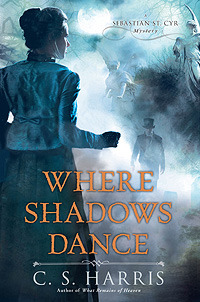 Where Shadows Dance (Sebastian St. Cyr, #6) by
Where Shadows Dance (Sebastian St. Cyr, #6) by 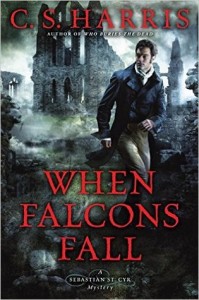 I was hooked back in 2005, and devoured the first five books in the series as they were published. Until, as so many things do, the series got caught up in the black hole of “so many books, so little time” and I stopped following until I was asked to
I was hooked back in 2005, and devoured the first five books in the series as they were published. Until, as so many things do, the series got caught up in the black hole of “so many books, so little time” and I stopped following until I was asked to  And I love the way the known historical conflicts of the time, both in government in England and in the wider world, are neither ignored nor brushed aside but instead inform every aspect of the mystery and give it depth and substance. All while a murder is committed, the crime is investigated, and evil gets its just desserts even as the story acknowledges that there are plenty of other – and often worse – evils afoot in that wider world that Devlin has yet to deal with. If he can.
And I love the way the known historical conflicts of the time, both in government in England and in the wider world, are neither ignored nor brushed aside but instead inform every aspect of the mystery and give it depth and substance. All while a murder is committed, the crime is investigated, and evil gets its just desserts even as the story acknowledges that there are plenty of other – and often worse – evils afoot in that wider world that Devlin has yet to deal with. If he can. The Weight of Command by
The Weight of Command by  Escape Rating A: This is not exactly the first time this scenario has been done. (There are at least SIX different variations of it in the
Escape Rating A: This is not exactly the first time this scenario has been done. (There are at least SIX different variations of it in the  I picked up The Weight of Command because I adored the author’s previous work, especially his
I picked up The Weight of Command because I adored the author’s previous work, especially his 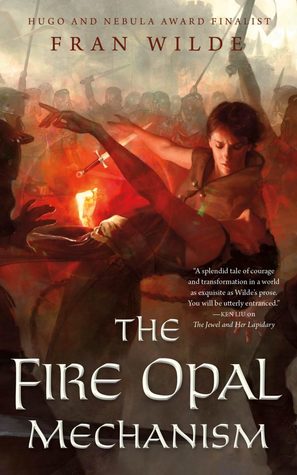 The Fire Opal Mechanism (Gem Universe #2) by
The Fire Opal Mechanism (Gem Universe #2) by 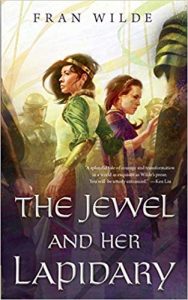 Escape Rating A-: At first, and for a rather long time thereafter, it seems as if the core of The Fire Opal Mechanism is about the freedom of information versus the censorship of it. And yet, at the beginning – the beginning that Ania and Jorit observe and not the place where they personally start – that wasn’t actually the case.
Escape Rating A-: At first, and for a rather long time thereafter, it seems as if the core of The Fire Opal Mechanism is about the freedom of information versus the censorship of it. And yet, at the beginning – the beginning that Ania and Jorit observe and not the place where they personally start – that wasn’t actually the case.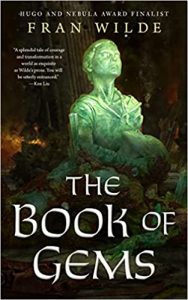 That their harrowing journey together bonds Ania and Jorit in their own mutual truth is the sparkling icing on a very tasty and thought-provoking little book-cake.
That their harrowing journey together bonds Ania and Jorit in their own mutual truth is the sparkling icing on a very tasty and thought-provoking little book-cake.